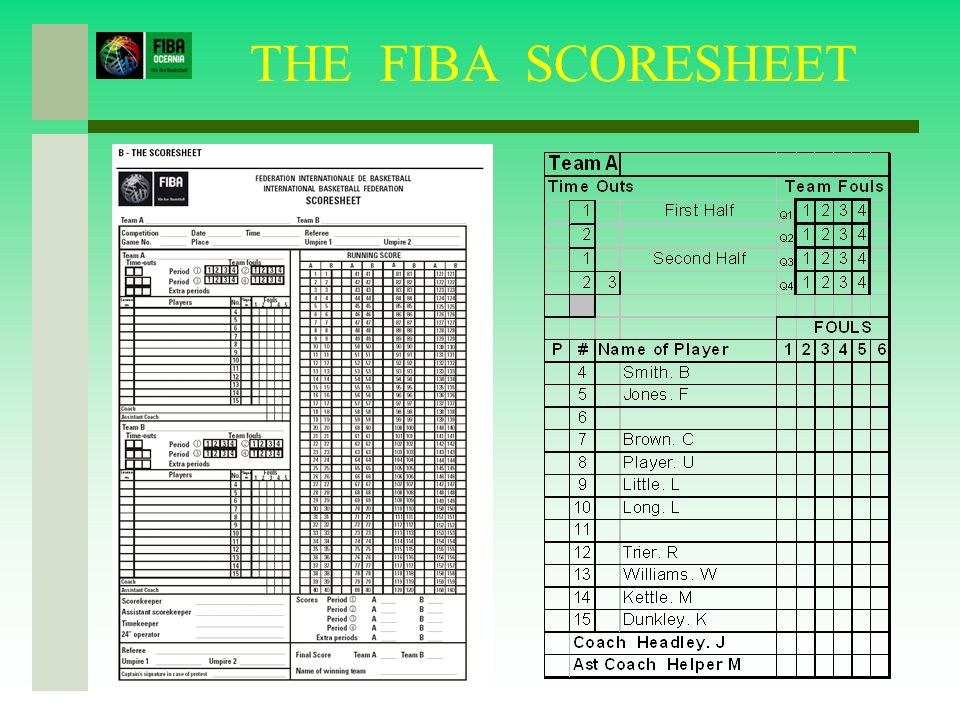Home »
Misc »
How to use a basketball score sheet
How to use a basketball score sheet
How to Keep a Basketball Score Sheeet
How to Keep a Basketball Score Sheet
Keeping track of the score in basketball games is something that every person involved in the sport does, even if you are just an avid fan watching the match.
But basketball also includes detailed statistical categories other than the points a team compile when they successfully put the ball into the hoop. If you are tasked to be a scorekeeper, you also have to tally rebounds, assists, steals, blocks, turnovers and other important numbers essential in the rules of basketball.
This is not just one of those easy drills as the stats has to be accurate and should not include any discrepancy. If you are new to filling out a basketball stat sheet or you just want to refresh your knowledge of it, then read on as we go through the basics of basketball statistics.
Writing down the players' names and numbers
The first category to fill out consists of the names of the players and their jersey numbers, as well as the names of the coaches.![]() You write down their names on the longest boxes you can see on the stat sheet, then place their numbers on their corresponding small boxes. The boxes for the coaches' names are usually located at the top, right beside the names of the teams. You have to be accurate in writing down their numbers because the referees will do a hand signal of a player's number when he commits a foul.
You write down their names on the longest boxes you can see on the stat sheet, then place their numbers on their corresponding small boxes. The boxes for the coaches' names are usually located at the top, right beside the names of the teams. You have to be accurate in writing down their numbers because the referees will do a hand signal of a player's number when he commits a foul.
Moreover, the number printed at the back of a player's jersey is usually the largest one you can see on his uniform, making it easier for you to tally his points when he scores. In terms of the sequence of the players' names, you can list them down numerically so that you can find them on the stat sheet more quickly. After that, you should mark with an asterisk the starting line-up of each team or basically the first five players fielded in by the coaches. You can do this first category of the stat sheet by yourself, or you can ask the coaches or the managers to write them down for you.
Marking Change of Possesion on a Basketball Stat Sheet
Another important non-statistical category in basketball stat sheets is marking the change of possessions.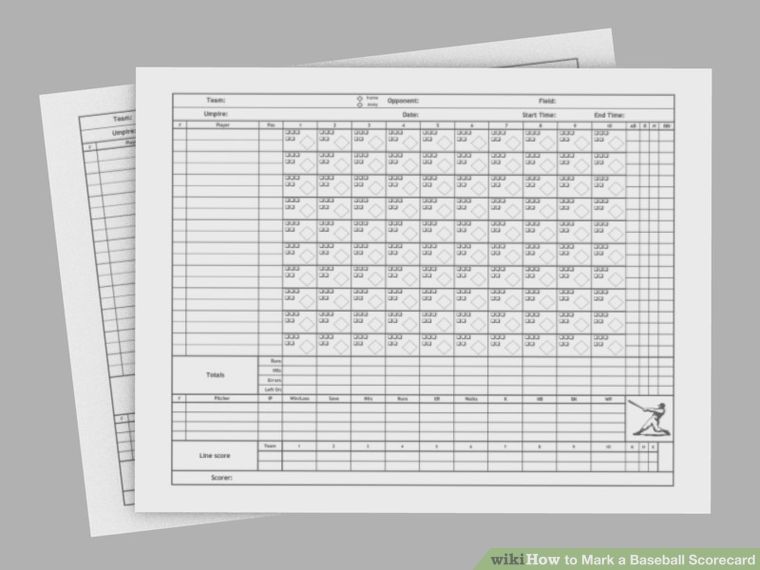 This occurs in jump-ball situations, but there is a big difference between amateur and professional leagues. In amateur leagues, teams only jump for the ball at the start of the game and to begin an overtime period.
This occurs in jump-ball situations, but there is a big difference between amateur and professional leagues. In amateur leagues, teams only jump for the ball at the start of the game and to begin an overtime period.
If there is a situation when there is a tie-up for the ball, the referees will refer to the scorekeeper to see which team will be rewarded with the possession. That is the main reason why you should be careful in marking this category. It is usually located at the top right corner of basketball stat sheets, in which you encircle the squad who won the first possession.
After that, you then just draw a line through each squad so that you would easily know who will be rewarded with the next possession.
Keeping track of team and individual player points
Now, we dive deep on most vital stat: points. It is the primary reason why we have a stat sheet in basketball. Two essential things to consider is that points are separated into two: team points and individual player points.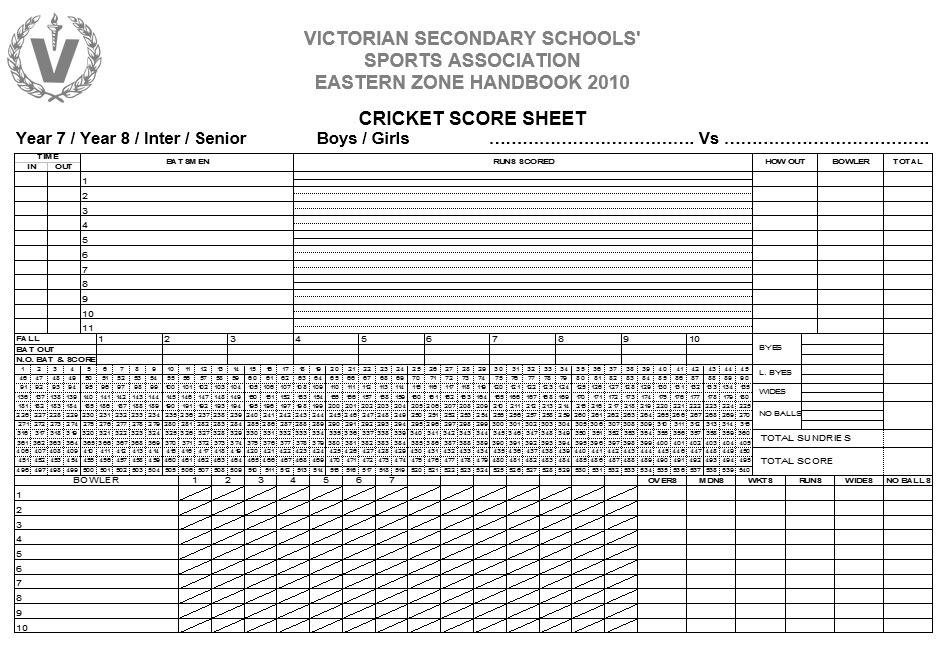 You record team points through the Running Score section. When a player scores, you just put a slash mark in the corresponding box to keep track of teams' total points. As soon as a quarter ends, you will put the teams' total points in the Quarter Score section. After you record each made basket in the Running Score section, you then proceed to the players' points section. When a player makes a two-point basket, you just write "2" in the box. You write "3" when he successfully hits a three-pointer, then "1" for each free throw made. The individual scores are divided by the four quarters, which means that you have to record somebody's stats under the corresponding quarter.
You record team points through the Running Score section. When a player scores, you just put a slash mark in the corresponding box to keep track of teams' total points. As soon as a quarter ends, you will put the teams' total points in the Quarter Score section. After you record each made basket in the Running Score section, you then proceed to the players' points section. When a player makes a two-point basket, you just write "2" in the box. You write "3" when he successfully hits a three-pointer, then "1" for each free throw made. The individual scores are divided by the four quarters, which means that you have to record somebody's stats under the corresponding quarter.
Recording team and individual player fouls and timeouts
Yet, that is not where basketball stat sheets end. The next critical category you have to track is the fouls. Just like in the scoring section, there are team fouls and players' fouls. When a referee calls a foul, immediately record it at the teams' fouls section so that you would know if they hit the penalty situation.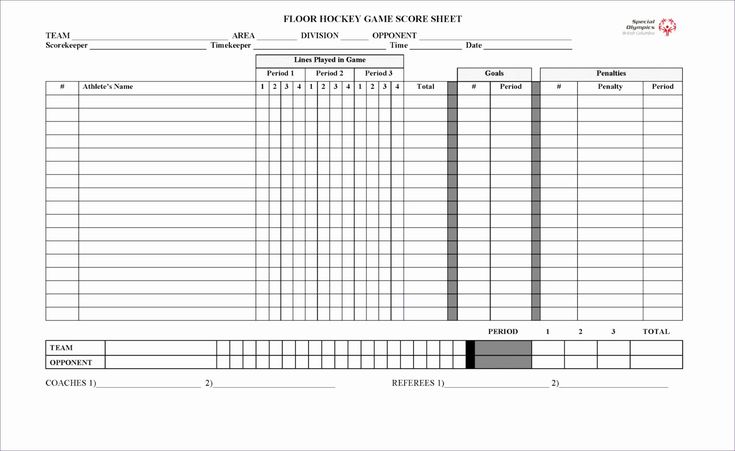 As for the individual fouls, you can see the boxes of the personal fouls beside the scoring section for the players. If someone commits a personal foul, put a slash mark on the "P1" box in the section. If he reaches five fouls, you have to inform the referees because it means that he has fouled out of the game and is not allowed to continue playing. You can also see the technical foul boxes in this section. Should someone be called for a technical foul, put a slash mark on the "T1" box. Bear in mind that a technical foul is also counted on the five allowed fouls for each player, and two technical fouls means that he is ejected from the game. Also, be reminded that timeouts are recorded in the stat sheet. This category is located at the Teams are usually allowed seven timeouts in games, and two timeouts for every quarter. Make sure you got this right so that coaches would know if they have already used up their allowed timeouts.
As for the individual fouls, you can see the boxes of the personal fouls beside the scoring section for the players. If someone commits a personal foul, put a slash mark on the "P1" box in the section. If he reaches five fouls, you have to inform the referees because it means that he has fouled out of the game and is not allowed to continue playing. You can also see the technical foul boxes in this section. Should someone be called for a technical foul, put a slash mark on the "T1" box. Bear in mind that a technical foul is also counted on the five allowed fouls for each player, and two technical fouls means that he is ejected from the game. Also, be reminded that timeouts are recorded in the stat sheet. This category is located at the Teams are usually allowed seven timeouts in games, and two timeouts for every quarter. Make sure you got this right so that coaches would know if they have already used up their allowed timeouts.
Tallying assists, rebounds, steals, blocks, turnovers and field goal attempts
Then, there are the other individual basketball stats that you have to keep track of if the tournament's committee deems it necessary.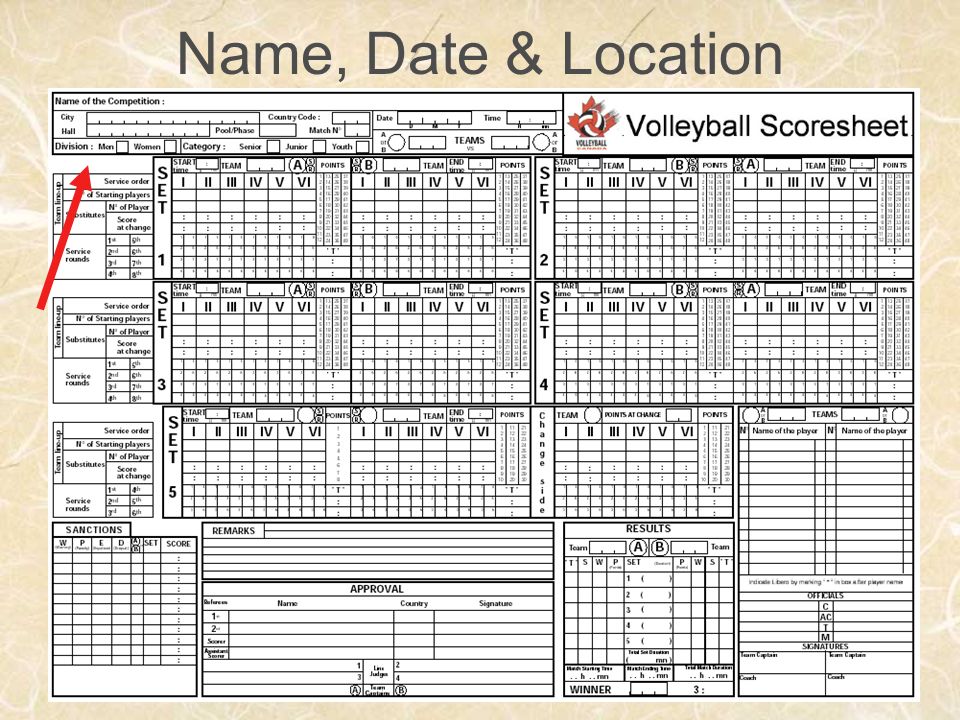 Usually, basketball stat sheets just record points and fouls under the individual categories. However, there is also the possibility that you need to mark down a player's assists, rebounds, steals, blocks, turnovers and field goal makes and misses. Today's coaches have been very mindful of these statistics as a helpful tool in figuring out the strengths, weaknesses and tendencies of their hoopers. But the thing is you cannot track all these stats alone so you have to ask help from two or three more people to watch the plays and mark down the stats.
Usually, basketball stat sheets just record points and fouls under the individual categories. However, there is also the possibility that you need to mark down a player's assists, rebounds, steals, blocks, turnovers and field goal makes and misses. Today's coaches have been very mindful of these statistics as a helpful tool in figuring out the strengths, weaknesses and tendencies of their hoopers. But the thing is you cannot track all these stats alone so you have to ask help from two or three more people to watch the plays and mark down the stats.
We start with tracking each player's assists. Usually, point guards are the ones who tally the most assists but basketball has become a positionless game so everyone has the chance to dish out assists. When a player passes the ball to his teammate, who then successfully scores, you immediately mark a slash mark on the assists category of that hooper who passed the ball. Another important stat in basketball is the rebounds. Coaches would always say that a team controls games by controlling the rebounds. As the stats tracker, you have to be alert in identifying which player made the rebound, whether it be on offense or defense. Same with the assists, you just have to put a slash mark at the rebounds category and then just add it up for the total number of rebounds after the game. The next stat categories are defensive stats such as steals and blocks. These defensive stats act as excellent barometer for how players exert tremendous effort on defense, something that has been very underrated because most aspiring basketball athletes only want to score. Again, whenever a defensive player steals the ball or disrupts the passing lane and tips the ball to his teammate, put another slash mark on his corresponding steals section. On the other hand, if defensive players successfully blocks a shot from the opposing team, you just have to do the slash mark you did in the assists, rebounds and steals category.
Coaches would always say that a team controls games by controlling the rebounds. As the stats tracker, you have to be alert in identifying which player made the rebound, whether it be on offense or defense. Same with the assists, you just have to put a slash mark at the rebounds category and then just add it up for the total number of rebounds after the game. The next stat categories are defensive stats such as steals and blocks. These defensive stats act as excellent barometer for how players exert tremendous effort on defense, something that has been very underrated because most aspiring basketball athletes only want to score. Again, whenever a defensive player steals the ball or disrupts the passing lane and tips the ball to his teammate, put another slash mark on his corresponding steals section. On the other hand, if defensive players successfully blocks a shot from the opposing team, you just have to do the slash mark you did in the assists, rebounds and steals category.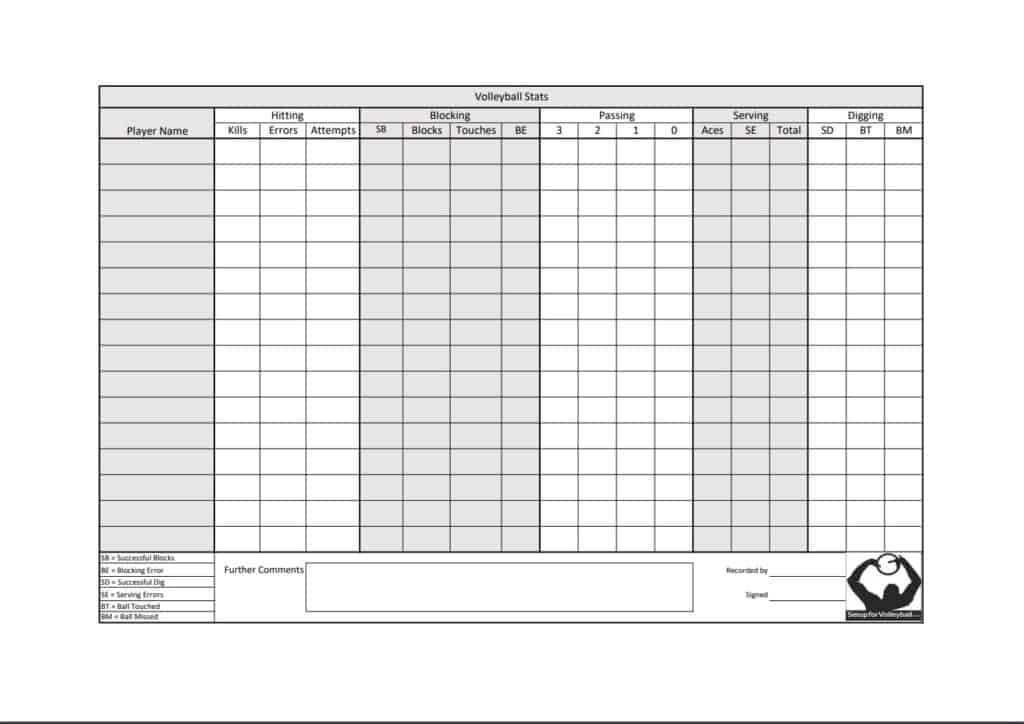 Coaches put a lot of emphasis in their squad's defense, so expect them to really dive deep in looking at their players' steals and blocks tally.
Coaches put a lot of emphasis in their squad's defense, so expect them to really dive deep in looking at their players' steals and blocks tally.
Then their are the other stats like field goal attempts and turnovers. Coaches would want to know how efficient their players are shooting the basketball, which is the main reason why you also have to tally how many times a hooper has shot the ball. Shots are divided by three sections: two-point shots, three-pointers and free throws. Also be reminded that you don't just keep track of how often a player shoots the ball. You should also mark how many times he has successfully put the basketball into the hoop. Through this, his coaches will be able to know how well he is shooting the basketball. Lastly, you also have to track players' turnovers as this is another barometer that tells how teams are executing their offensive plays during the games. When a player is handling the basketball then the defender from the opposing team steals it from him, that is automatically a tally in his turnovers count. Offensive fouls are also counted as turnovers so make sure to ask referees what kind of fouls they are calling.
Offensive fouls are also counted as turnovers so make sure to ask referees what kind of fouls they are calling.
How To... Scorekeep a Basketball Game
The following information details the step by step procedure required to properly score and time a basketball game. The 'Timer' is responsible for the game clock, score board and possession arrow. The 'Scorer' is responsible for completing the score-sheet. Use the completed sample scoresheet along with the information provided below is also available at each gym site by the Gym Supervisor.
SCORE CLOCK OPERATOR
- Game Times. STOPPED TIME (game clock stops at every whistle) - Varsity / Juvenile Club (Rising Stars): 4 x 10 minute quarters; 5 minute overtime if necessary - Junior Varsity: 4 x 8 minute quarters; 4 minute overtime if necessary - Junior High / Middle School: 4 x 8 minute quarters; 4 minute overtime if necessary - Club or younger: 4 x 8 minute quarters; 4 minute overtime if necessary - RUNNING TIME (game clock runs throughout game including timeouts) - Community Club: 1st Half – 25 min ‘running’ time; 2nd Half – 22 min ‘running’ time; last 2 minutes being ‘stopped’ time.

- Clock Operation. In ‘stopped’ time situations, start clock as referee drops hand (watch the referee that hands the ball into play) and stop clock at sound of all whistles - keep clock running after a score except if a field goal is scored in the last 2 minutes of the 4th quarter and the last 2 minutes of any overtime period including when the team scored upon requests a timeout. Keep hand on clock switch at all times.
- Possession Arrow. Point possession arrow to the basket of the team that loses the jump ball. Switch “possession arrow” after every jump ball situation.
- Scoring. Indicate on the score board one (1) point for every made free throw; two (2) points for every made field goal; three (3) points for every made 3-point field goal - watch the referee’s hands for what each shot is worth.
- Timeouts. Are requested through the scoretable. Granted to requesting team at the next whistle or if the requesting team is scored upon.
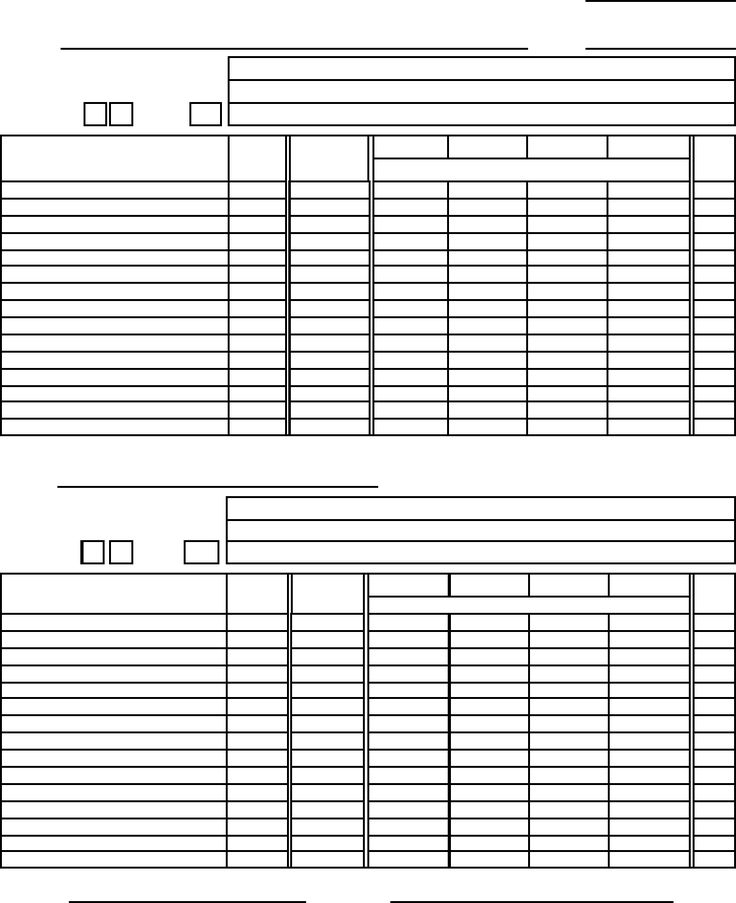 Two (2) one minute timeouts in the first half; three (3) one minute timeouts in the second half per team. One (1) timeout per team per overtime period. No carryovers. Community Club games see two (2) one minute time outs for each team. None in the last five minutes. Sound the horn with 10 sec remaining in the 1 minute timeout.
Two (2) one minute timeouts in the first half; three (3) one minute timeouts in the second half per team. One (1) timeout per team per overtime period. No carryovers. Community Club games see two (2) one minute time outs for each team. None in the last five minutes. Sound the horn with 10 sec remaining in the 1 minute timeout. - Quarter Breaks. One to two minutes break (ask local host). Sound the horn with 30 sec remaining in the quarter break. Reset all bonus lights, team fouls.
- Halftime. Five (5) to ten (10) minutes. Ask game host. Reset all bonus lights, team fouls.
- Overtime. Games using 4 x 10 min quarters will use a five (5) minute overtime period; games using 4 x 8 min quarters will use a four (4) minute overtime period. One (1) minute break heading into each overtime period. The 4th quarter bonus situation carries over into all overtime periods.
Communicate with “scorer” at all times to ensure game score is correct
SCORESHEET
- Team Rosters.
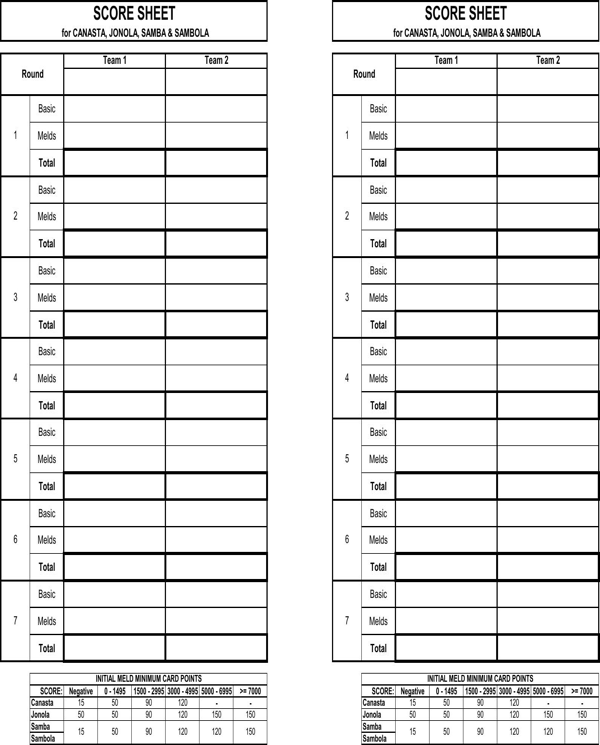 Have coaches complete the game rosters - full names and numbers! Include date, time & location (see reverse side for a sample).
Have coaches complete the game rosters - full names and numbers! Include date, time & location (see reverse side for a sample). - Scoring. Mark running score first with a slash “ / “ mark. Mark individual score second; “2” for a two-point score - “3” for a three-point score - full or empty circles to indicate made or missed free throws (1 point each)
- Personal Fouls. Record personal fouls as “|” in ‘player fouls’ box next to the corresponding name - 5 personal fouls = disqualification.
- Technical Fouls. Marked as “T” - go towards personal and team foul totals. Mark coach’s ‘T’s’ next to their names
- Timeouts. Are requested through the scoretable. Granted to requesting team at the next whistle or if the requesting team is scored upon. Record all time outs on sheet next to team’s name. Two (2) one minute timeouts in the first half; three (3) one minute timeouts in the second half per team.
 One (1) timeout per team per overtime period. No carryovers. Community Club games see two (2) one minute time outs for each team. None in the last five minutes.
One (1) timeout per team per overtime period. No carryovers. Community Club games see two (2) one minute time outs for each team. None in the last five minutes. - Team Bonus. After team reaches five (5) team fouls per quarter, other team is in ‘double bonus’ (2 shots). Notify referee by sounding horn. All team fouls reset going into the next quarter.
- Quarter and Halftime Breaks. Indicate what quarter and halftime scores are; separate 1st half team fouls by drawing long line down ‘fouls’ column; draw long ‘squiggle’ line down 1st half score box to prevent marking of 2nd half stats in 1st half columns.
- Overtime. Time-outs DO NOT carry over to the overtime period(s). Teams receive one timeout per overtime period (no carryover).
- End of Game. Total all scores and write in “winning team” and “final score”; total all the individual points; home team / tournament host keeps original white copy, give yellow to “winning team” and pink to “losing team”.

Communicate with “timer” at all times to ensure game score is correct
SHOTCLOCK OPERATOR
When a shot clock is being used in a game, the time shall be set at 24 seconds.
Start the Clock whenever a team gains control of a live ball on the playing court.
Stop the clock when…
- An official blows his whistle for a foul or violation.
- A ball on a shot for a field goal or on a pass enters the basket.
- A shot for a field goal touches the ring unless the ball lodges on the basket support.
- The game is stopped because of an action connected with the team not in control of the ball.
- The game is stopped because of an action not connected with either team, unless the opponents would be placed at a disadvantage.
Reset the clock to twenty-four (24) seconds with the display visible and restarted as soon as a team gains control of a live ball on the playing court.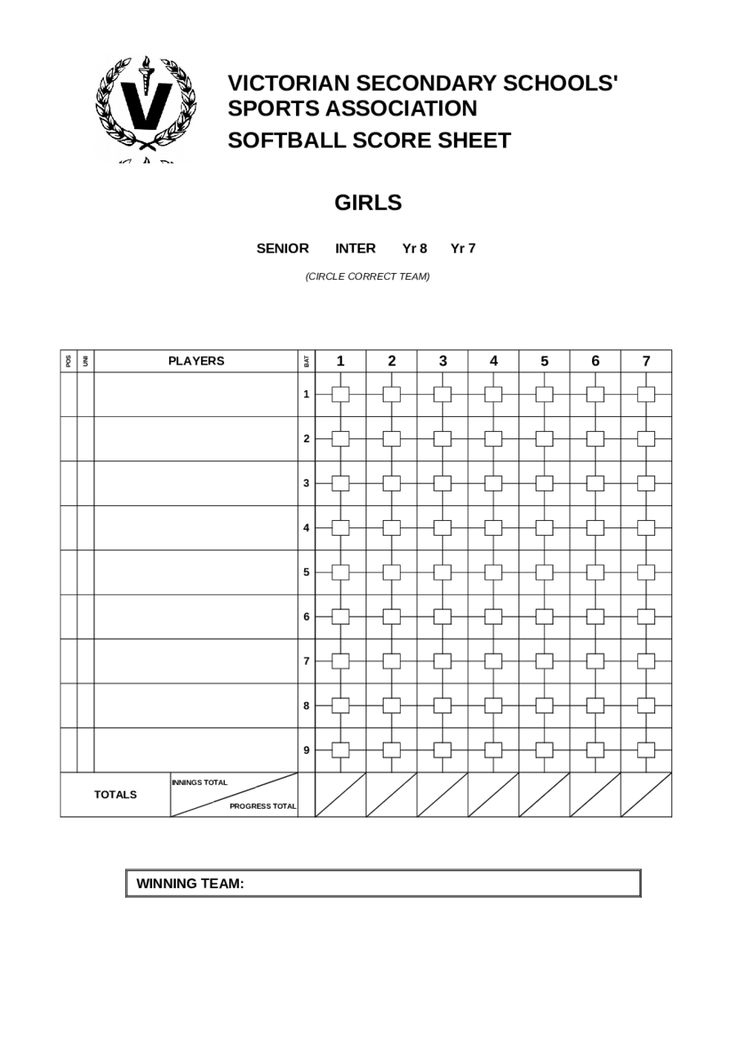 Note that the mere touching of the ball by an opponent does not start a new twenty-four second period if the other team remains in control of the ball.
Note that the mere touching of the ball by an opponent does not start a new twenty-four second period if the other team remains in control of the ball.
Stop clock, but NO reset when the same team that previously had control of the ball is awarded a throw-in as a result of:
- A ball having gone out-of-bounds.
- A player of the same team having been injured.
- A jump ball situation.
- A double foul.
- A cancellation of equal penalties against the teams. 50.4 Stopped,
Turn the clock off when a team gains control of a live ball on the playing court, and there are fewer than twenty-four (24) seconds remaining on the game clock in any period. Also note that the twenty-four second device signal does not stop the game clock or the game, nor cause the ball to become dead, unless a team is in a control of the ball.
MORE RESOURCES INCLUDING SCORESHEETS, SAMPLES AT.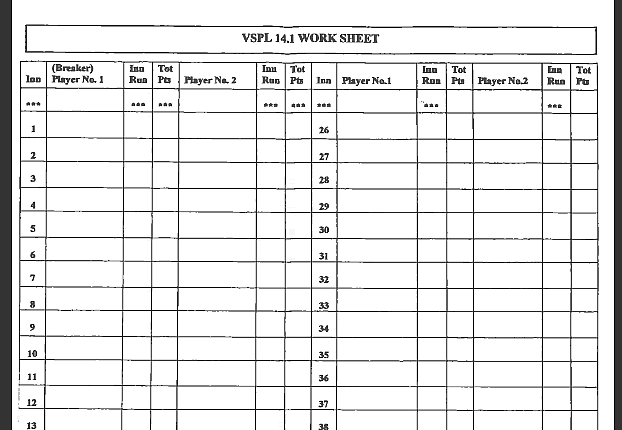 ..
..
How to draw a basketball hoop and ball step by step Easy Drawing Tutorials
Basketball is an iconic American sport. Its legendary players such as Michael Jordan and LeBron James are considered heroes. Today it is the only sport whose origin lies exclusively in America.
How did basketball start? It was a rainy day in 1891. James Naismith taught physical education at the YMCA in Massachusetts. Stuck inside, what was his class supposed to do? With a soccer ball and two hemisphere peach baskets, Naismith invented the game we now call basketball.
School football teams helped popularize the sport; when the weather was too cold to practice outside, they would go inside and play basketball.
Did you know? Early basketball baskets had a bottom, so each time a point was scored, the ball had to be retrieved from the basket. The bottom of the basket was later removed, but the balls were too big to fall through. Instead, a long pole was used to push the ball out of the top of the basket.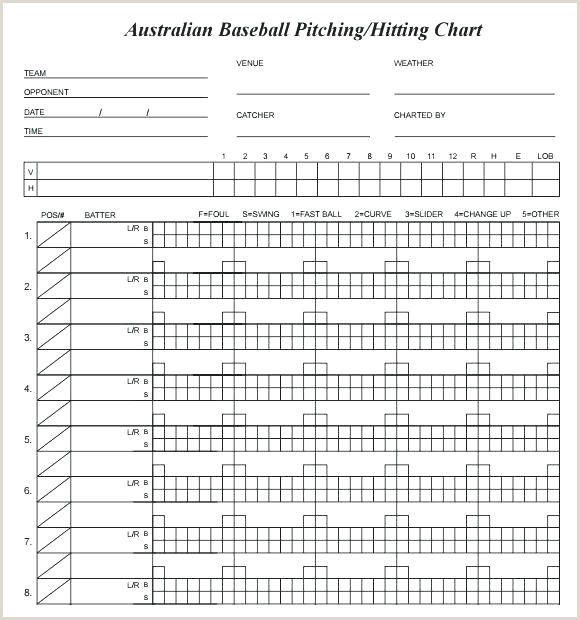
Actual baskets were used until 1906 when a metal rim and backplate was introduced. The rear shield also prevented fans with balcony seats from getting in the way of shots and allowed for rebound.
From its humble roots, basketball has spread throughout the world. Not only do professional teams exist in many countries, but public parks often have outdoor basketball courts.
Recreational basketballs can be seen outside houses and on the streets. This half-court version of the game is often referred to as "streetball". Other side effects of the game, including a beach version that allows you to carry a ball, have been invented.
Would you like to draw a basketball? Doing so is easier than ever with this easy, step-by-step drawing guide. All you need is a pencil, pen or marker and a sheet of paper. You can also color your finished drawing.
If you liked this tutorial, see also the following drawing guides: Baseball Bat, Baseball Cap, and Basketball Player.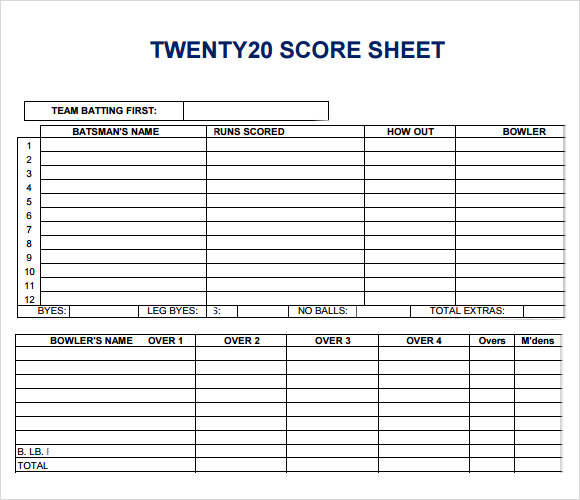
Basketball Hoop Step by Step Instructions
1. Start by drawing a flattened oval. Then draw a smaller oval inside the first one. This forms the rim of the basketball hoop.
2. Extend two straight lines horizontally from one side of the rim. The top line should be longer than the other. Then extend lines down from the ends of those lines. Connect them at the bottom using a straight line. This connects the rim to the back panel.
3. Draw a curved line down one side of the rim. This starts the outline of the network.
4. Draw a curved line down from the other side of the rim. Connect the lines at the bottom using a wavy, irregular line. Then draw diagonal parallel lines across the net. Follow them in parallel lines on the opposite diagonal. The result will be a hatch or checkerboard pattern that indicates the lines of the network.
OTHER EASY DRAWING GUIDES:
5.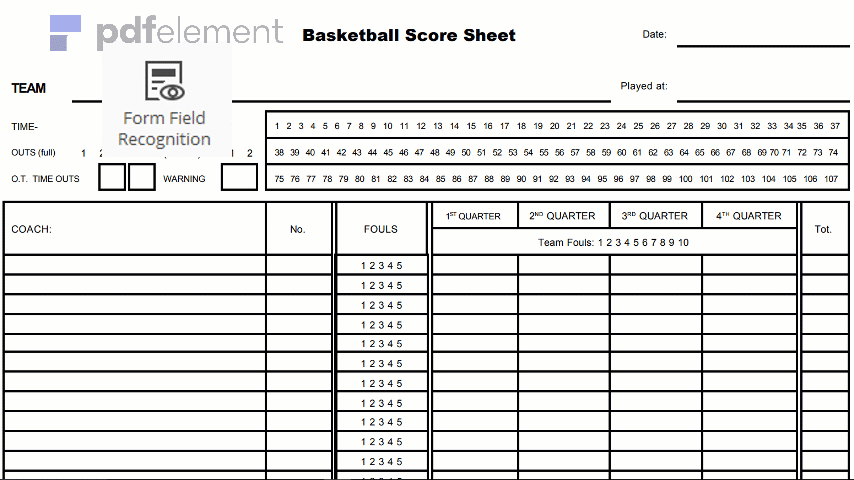 Draw perpendicular diagonal lines in the inner oval of the hoop, indicating the opposite side of the mesh.
Draw perpendicular diagonal lines in the inner oval of the hoop, indicating the opposite side of the mesh.
6. Draw a circle covering the bottom of the net. This will become basketball.
7. Draw a curved line across the basketball. Perpendicular to this line, draw three additional curved lines. These are basketball stitches.
8. Draw a four-sided shape using four straight lines. The extension from the rim should be in the center of this shape. It's a basketball shield.
OTHER EASY DRAWING GUIDES:
9. Draw a smaller four-sided shape inside the first one. Extend a pair of straight lines from the rim to the point where it attaches to the backrest, providing additional support for the rim.
Whoosh! It was nothing but a network. Check out our drawing guides for tips on how to put together your team.
The Complete Basketball Hoop Drawing Tutorial in One Image
Like this Drawing Guide?
Leave a comment below or follow on Pinterest.
Plexiglas basketball backboard 1800mm x 1050mm without ring (id 57965376)
Plexiglas basketball backboard 8mm thick, width 1800mm, height 1050mm. with power anti-vibration metal frame.
Basketball backboard made of a solid sheet of Plexiglas (thickness 8 mm.) Reinforced on a metal frame. The backboards have seats for basketball hoops 100 × 110 mm in size. Used in gyms and playgrounds. Powder coating.
Our store offers you a huge range of sporting goods.
Our goal is to provide customers with quality sports goods at low prices. Netsport - wholesale sporting goods at low prices in Almaty, delivery across the Republic of Kazakhstan and the CIS. Production and sale. Here you will find the largest selection of sports equipment and sports goods for Boxing, football, volleyball, basketball, swimming, table tennis, Judo and Karate, strength training equipment, exercise bikes, dumbbells, barbells, trainers, treadmills, elliptical trainers, metal hoop, Climbing rope, Gymnastic bench, Reinforced gymnastic bench, Adjustable barrier, Gymnastic jump horse, variable height, High jump rack, High jump bar, Wall bars, FOOTBALL balls, BASKETBALL balls, VOLLEYBALL balls, Kimono, BOXING GLOVES, HELMETS PAWS, SAMBO JACKETS, KIMONO JUDO WRESTLING TIGHTS, Gymnastic rope, Balls for rhythmic gymnastics, Gymnastic club, Gymnastic mat, Gymnastic hoop, Equipment for playing basketball, Equipment for playing football and hockey, Net for football goals, Gymnastic wall with a horizontal bar (metal), Horizontal bar (with bars) hinged, Crossbar gymnastic univ versal, Net for mini-football goals, Net for handball goals, Net for hockey, Protective net for the gym, any size (cell 40x40 or 100x100) sq. m, Equipment for gyms, Home exercise equipment: cardio and strength, Powerlifting (platforms), Locker room equipment, Wooden massagers, Expanders, Gymnastic balls, Hoops, Scales, and other necessary sports equipment.
m, Equipment for gyms, Home exercise equipment: cardio and strength, Powerlifting (platforms), Locker room equipment, Wooden massagers, Expanders, Gymnastic balls, Hoops, Scales, and other necessary sports equipment.
To receive a price list, send an application by e-mail.
High quality at a low price is the main principle of our company.
Compare prices, we have the best option in Almaty.
You can buy samples and send them all over the Republic of Kazakhstan. delivery and payment terms0098 Methods of payment :
Cash
Cash Calculation
Additional information on delivery:
can be placed online or by phone:
+7 (727) 329-20-20-9
+7 (702) +7 (747) 339-98-52
+7 (705) 33 99 852
+7 (702) 621-06-21
+7 (707) 521-05-21
or send request by e-mail in any form at: [email protected]
You can buy through the online store.
For an online store, the minimum purchase is from 10,000 tenge.
Types of payment :
After placing an order, our administrator will contact you to confirm the order and select the most suitable payment and delivery methods for you.
1. For cash in our store, in tenge at the internal rate.
2. By bank transfer. We can send you an invoice by fax or e-mail.
3. Payment to the courier in cash upon delivery of goods in Almaty.
We will deliver the goods you have chosen throughout the Republic of Kazakhstan immediately after the order has been agreed with the store administrator and its 100% payment. The most convenient way of delivery within the Republic of Kazakhstan is the use of courier delivery services.
Delivery cost:
1. Courier delivery within Almaty — 500 to 1000 tenge.
2. The cost and delivery time in Kazakhstan are determined by the courier services of ABT&E-trans Forwarding Company LLP, KAZPOCHTA itg, http://www.abttrans.kz, http://www.kazpost.